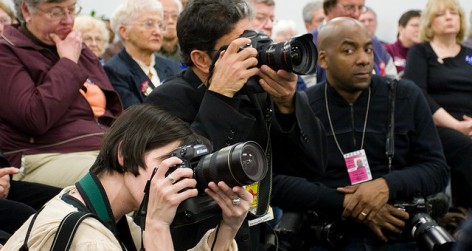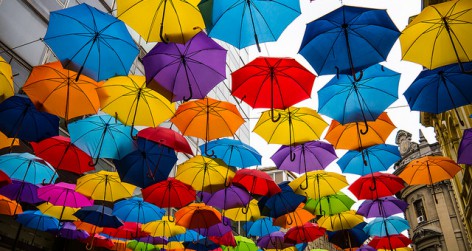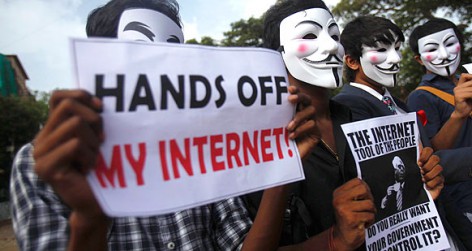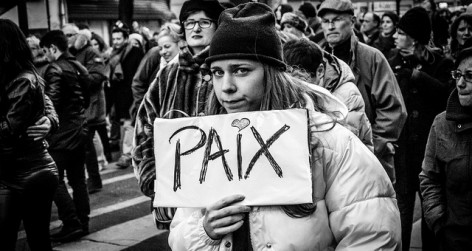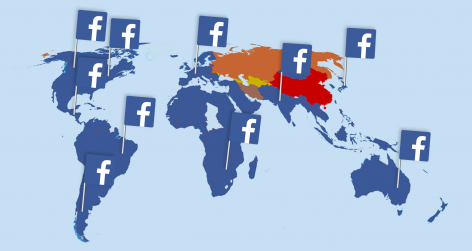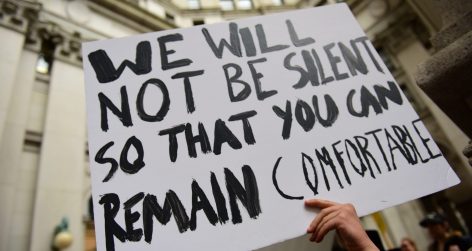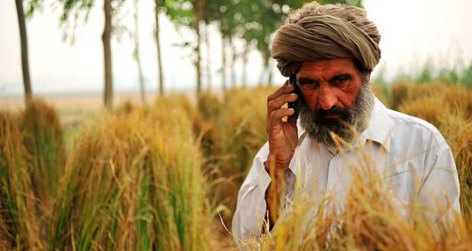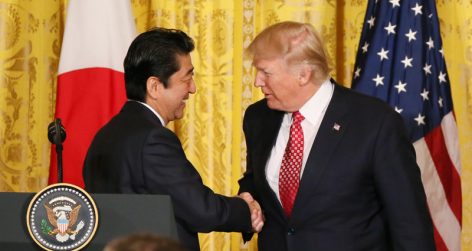The Indian media is in danger of losing its moral compass to the pressures of the new capitalism. It may be a time for a boycott in order to stop the rot, argues Manav Bhushan.

“Indian news is currently in a race to the bottom,” remarked the media magnate and journalist Prannoy Roy in his Reuters Memorial Lecture in November 2012. What’s more, that race is far from over. As anyone who has followed the Indian media’s reporting of recent incidents on the Indo-Pakistani border can testify, it is more often in journalists’ interests to stoke conflict than defuse it.
In fact, the brutal truth about the flourishing news industry – which has gone from one state-run news channel to 183 independent news channels in just twenty-five years – is that many of them are in the business of blackmail, or of selling sex and violence, and are prepared to go to any lengths, including taking a country to war, for the sake of audience ratings and advertising revenues. The problem is that Indian viewers validate confrontational, jingoistic reportage by rewarding media outlets like TimesNow with unprecedented viewing figures. Now other channels are being tempted or forced to follow suit, leading to panel discussions featuring the same eight or ten people shouting the same sound-bites over each other every night on topics that they know little about.
Regrettably, advertisers in particular seem to be contributing to a longstanding decline. The rise of politician-businessmen like Naveen Jindal has seen contradictory phenomena; positive stories planted to ensure a sweet advertising deal, and alleged extortion to prevent negative stories appearing. New Delhi TV (NDTV, the channel founded by current co-executive chairman, Prannoy Roy) prominently features a beauty contest known as the ‘Kingfisher Calendar hunt,’ conveniently sponsored by Kingfisher, a co-subsidiary, with NDTV, of the UB Group. Similarly, as the reporter Palagummi Sainath noted in one of his lectures, running a half-page story on the rapper Eminem in a Hindi newspaper (as was done by Dainik Bhaskar) may be totally meaningless for the readers, but will create an advertising space for certain consumer products.
Through exaggerated or false reportage, media outlets have become unaccountable to their audiences. Other outlets, by putting tabloid news to the forefront, have left even TimesNow far behind. However, to single out individual reporters and television channels is to miss the wood for the trees. There is something rotten in the state of Indian news, and the fact that people have started looking back at the days when the media was dominated by the public broadcaster Doordarshan with a sense of warm nostalgia is a cause for alarm.
Countries like the UK and Germany have adopted forms of publicly funded not-for-profit news outlets because they feel that there are grave dangers in a news industry functioning solely for profit. Yet unlike Doordarshan, these public broadcasters have full editorial independence. Fears of governmental control have led to the diversification of the Indian media, yet the dangers of for-profit broadcasting are now presenting themselves in all sorts of sinister ways in the world’s largest democracy, as a cursory view of reporting on recent rape cases shows.
Sensationalism has led outlets includingNDTV and The Times of India report rapes in ways that are flippant and voyeuristic to the point that it made one sick to the stomach. The gang rape in Delhi evoked an unprecedented public reaction because people could identify with the victim – because they felt that she was ‘one of us’. On the other hand, the detached language and liberal use of the word ‘Dalit’ in the story of a woman’s rape in Haryana creates a boundary between the middle-class consumer of news and the lower-caste victim.
When the entire country is up in arms protesting about violence against women, our TV news anchors have the gall to sit and preach to the advertising industry, the film industry and everybody on the streets that they should not be selling sex. During the same panel discussions, cameramen repeatedly focus on the attractive women in the audience; these panel discussions are then followed by an attractive model reporting on cricket and the latest scandals from the bollywood gossip industry. A look at the advertisements featured on the Times of India serves to illustrate this point: three advertisements for weight loss, one for a dating website and four pictures of scantily clad women.
The degradation of women in the media is so deep-rooted that we need a plethora of changes to make things better. Changes to laws, the police, the judiciary, the legislature, the film industry, the advertisers, the internet and the junta need to happen quickly. But something desperately needs to be done about the news industry too. A news industry that has no qualms about using rapes for voyeuristic purposes and beating the drums of war should not be tolerated, let alone rewarded with higher advertising revenues.
In an ideal scenario laws would actually be passed and then not misused. However, India is just as likely to abandon the recommendations of its own Leveson Inquiry as Britain. Instead of cursing the rapacious capitalism that has brought us to this juncture, we ought to exercise the only power that it gives us – our power as consumers.
If the boycott of foreign cloth could become a vital part of the Independence movement at a time of shortages there is no reason why a weeklong boycott of a news channel cannot result in some drastic changes to its policy, or established anchors being replaced by saner faces. There are, after all, 182 other choices, and because news channels need audiences more than audiences need them, we have an enormous unrealised power.
Indeed, why restrict ourselves to news channels? Why should we not boycott misogynistic music promoters (as in the case of the Yo Yo Honey Singh concert), films and consumer-products such as vagina-fairness creams? A boycott has advantages distinct from a ban imposed by the government or violent organisations such as the Shiv Sena. Just as freedom of speech is a right, so is the right to boycott an organisation peacefully; the judicious use of this right could go a long way in sending a strong message to the powers that shape our society for the worse.
The last two years in India have seen the spontaneous outpouring of people onto the streets, protesting against issues like corruption and gender-inequality, which affect all strata of society. Whatever the criticisms of this middle-class awakening may be, it is undeniable that the protests are linked to a feeling amongst the middle classes that going out onto the streets may make a difference; that their voices could matter.
This realisation that collective action is not just a meaningless phrase but an instrument of real power needs to be taken further and used to repair the crumbling fourth pillar of our democracy. For if we don’t act now, we may soon find that the roof has fallen upon our heads.
– Manav Bhushan
